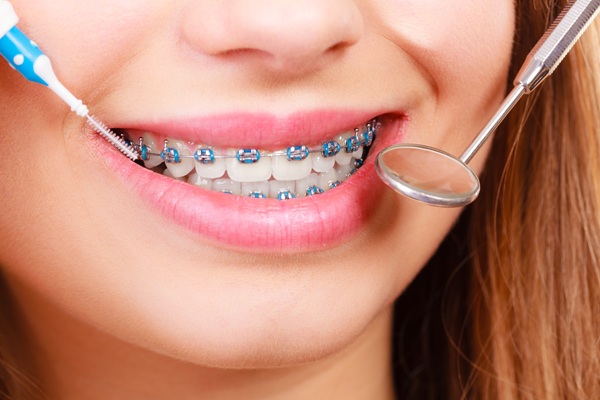 Ceramic braces are a less-noticeable alternative to metal braces. Similar to metal braces, ceramic braces are made up of two main components: wires and brackets. The brackets are glued to each of the patient’s teeth, while the wires connect the brackets on each dental arch. The wires are used to control how much force the appliance exerts on the patient’s teeth. The tighter they are, the more force the appliance exerts. The braces work by applying constant force on teeth, gently moving them to new positions over time.
Ceramic braces are a less-noticeable alternative to metal braces. Similar to metal braces, ceramic braces are made up of two main components: wires and brackets. The brackets are glued to each of the patient’s teeth, while the wires connect the brackets on each dental arch. The wires are used to control how much force the appliance exerts on the patient’s teeth. The tighter they are, the more force the appliance exerts. The braces work by applying constant force on teeth, gently moving them to new positions over time.
Metal braces have been used to straighten teeth for over a century, and they remain the most effective way to improve teeth alignment. However, these appliances affect the patient’s smile, so many people avoid getting the teeth straightening treatments that they need.
Ceramic braces were developed to create a more aesthetically pleasing alternative to metal braces. Instead of metal wires and brackets, these devices come with tooth-colored brackets and wires. Orthodontic issues that can be fixed by metal or ceramic braces include:
- Crooked teeth
- Crossbites
- Underbites
- Overbites
- Spaces between teeth
- A bad bite
Comparing metal and ceramic braces
Let us look at these two types of braces to better understand their similarities and differences.
1. Metal braces
These braces are one of the oldest ways to straighten teeth, and they are still recommended for the most severe dental issues. The metal components of these devices make them more durable than many other appliances used to straighten teeth.
Metal braces have evolved since they were invented. Nowadays, these appliances have sleek designs that can be customized to suit a patient’s tastes. However, metal braces remain one of the most noticeable appliances used to straighten teeth. Anyone who interacts with someone who has metal braces will notice the appliance.
2. Ceramic braces
These devices can be used to treat many of the same issues that metal braces can, but they are not as durable. The tooth-colored components used to create these appliances are not as tough as the metal components used to make metal braces.
Orthodontists typically recommend metal braces for patients who need extensive treatments because they are less likely to become damaged during the course of the patient’s treatment. The main advantage ceramic braces have over metal braces is their improved aesthetics. The tooth-colored components make them difficult to notice. These devices require more cleaning than metal braces because discoloration of the tooth-colored components makes the appliance more noticeable.
We can straighten your smile
Metal braces and ceramic braces accomplish the same thing: improving the alignment of your teeth. Are you ready for properly aligned teeth? Give us a call or stop by our Brooklyn clinic to set up an appointment with our orthodontist.
Request an appointment or call Michael Emanuel DDS PLLC at 718-635-4822 for an appointment in our Brooklyn office.
Related Posts
An orthodontist has various treatments to help patients achieve a straighter smile. While it is possible to get orthodontic treatment from other dental providers or even online, choosing a specialist like an orthodontist to guide your treatment can be the safest, quickest, and most comfortable route. Understanding why orthodontist-led treatments are the preferred choice for…
Curious about orthodontic treatment? Read on to learn more. Straight teeth and properly aligned jaws make for a healthy and functional smile. Many people are lucky to have naturally straight teeth, but others require orthodontic intervention to correct overcrowding, gaps, or misalignment. In some cases, orthodontic therapy can extend far beyond repositioning the teeth in…
Discovering you need orthodontic care does not have to be a worrisome situation. The orthodontist will help you the whole way, and the staff will guide you on any concerns, ranging from financing to maintenance. If you have booked an appointment with an orthodontist, this piece provides a guide on what to expect and questions…


